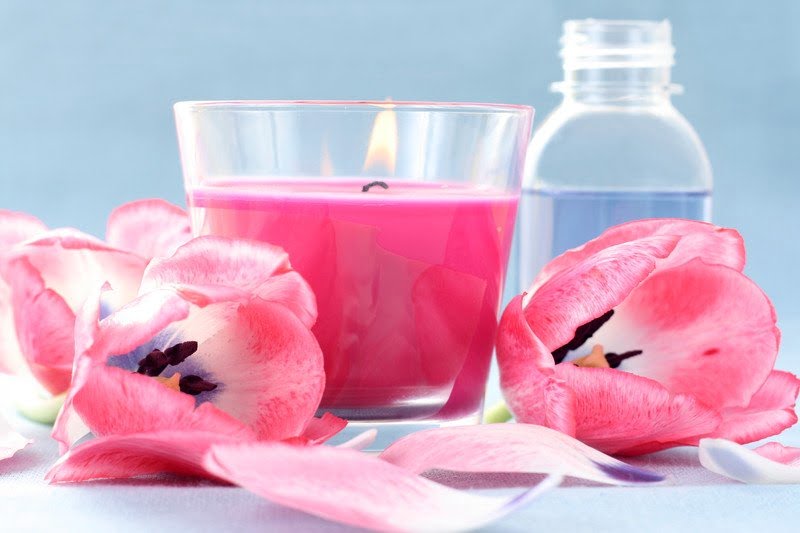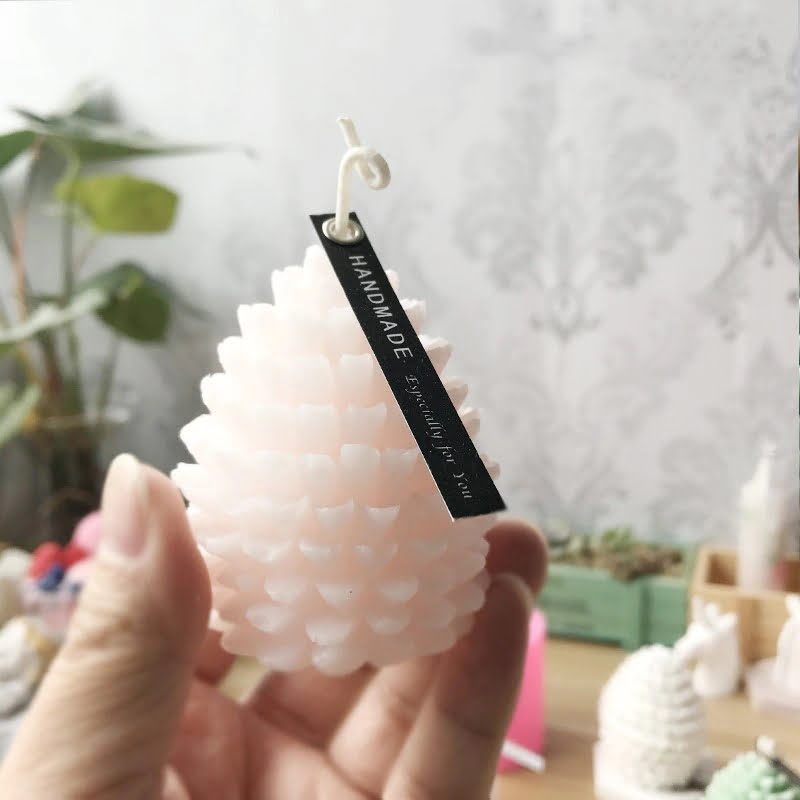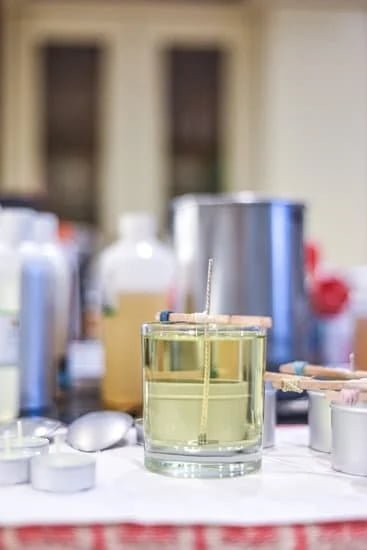Candles have been a part of human civilization for centuries, serving not only as a source of light, but also as a symbol of warmth and comfort. Whether used for relaxation, decoration, or even religious rituals, candles continue to hold their significance in our modern world. However, with the abundance of options available, choosing the right type of wax for candle making can be overwhelming.
In this article, we will delve into the fascinating world of candle making wax and explore the different options that are available to crafters. From soy wax to paraffin wax, beeswax to palm wax, coconut wax to innovative blends, each type has its own unique characteristics and considerations.
Understanding the differences between these waxes is crucial in determining which one best suits your specific needs and preferences. Factors such as burn time, scent throw, ease of use, sustainability, and cost all play a role in selecting the ideal wax for your candle making adventure.
Join us as we embark on a journey through the diverse realm of candle making wax. By understanding the various types and their qualities, you will gain valuable insights that will enable you to create beautiful and successful candles that bring joy and ambience to any space. So let’s roll up our sleeves and dive into this enchanting craft.
Understanding Different Wax Types
When it comes to candle making, choosing the right wax is essential for achieving the desired results. There are several types of waxes available, each with its own unique characteristics and qualities. Understanding the differences between these wax options will help you make an informed decision and create truly exceptional candles.
Soy Wax
Soy wax has gained popularity in recent years due to its natural origins and eco-friendly properties. Made from soybean oil, soy wax is biodegradable and renewable. It also produces a clean burn with minimal soot and a longer burning time compared to some other waxes. Additionally, soy wax has excellent scent throw capabilities, meaning it carries fragrances well.
However, soy wax does have some drawbacks to consider. It can be relatively soft, which may lead to issues like sagging or melting in high temperatures. To address this, manufacturers often blend soy wax with other types of waxes or additives to improve stability and performance.
Paraffin Wax
Paraffin wax is one of the most widely used waxes in candle making due to its affordability and versatility. Derived from petroleum by-products, paraffin wax offers a range of options in terms of melting point, hardness, and texture.
Paraffin candles produce a bright flame that burns consistently throughout the life of the candle. They are also known for their strong scent throw capabilities, making them popular among those who prefer highly fragranced candles.
However, it’s important to note that paraffin wax is not a natural or sustainable option. Its production involves non-renewable resources and can release harmful toxins when burned at high temperatures. If using paraffin wax, consider purchasing high-quality blends that minimize these potential drawbacks.
Beewax
Beeswax is a natural wax that is derived from the honeycombs of bees. Known for its pleasant aroma and beautiful golden color, beeswax offers a unique option for candle making.
Beeswax candles have a slow burn rate and emit a warm glow. They also produce negative ions when burned, which can help purify the air by neutralizing pollutants. Additionally, beeswax is a renewable resource and biodegradable, making it an environmentally friendly choice.
However, beeswax tends to be more expensive than other types of waxes. It can also be challenging to work with due to its high melting point and natural stickiness. Be aware that some scents may not blend as well with beeswax compared to other wax options.
By understanding the different wax types available, you can make an informed decision regarding which wax is best suited for your candle making needs. Whether you prioritize sustainability, fragrance throw capabilities, or cost-effectiveness, there is a wax type that will meet your requirements and help you create beautiful candles.
The Versatility of Soy Wax
Soy wax has become increasingly popular among candle makers for its versatility and numerous benefits. Made from soybean oil, this type of wax is a natural and renewable resource, making it an eco-friendly choice for those who prioritize sustainability. In addition, soy wax has a lower melting point than other waxes like paraffin, which means that candles made with soy wax burn cooler and can last longer.
One of the major benefits of using soy wax is its ability to hold fragrance oils exceptionally well. This means that soy wax candles can have a strong and long-lasting scent, filling a room with delightful aromas for hours on end. Soy wax also has a clean and even burn, without producing soot or carbon buildup commonly associated with other types of waxes.
Another advantage of soy wax is its ease of use. It has a lower melting point compared to other waxes, making it easier to work with during the candle making process. Soy wax also has excellent adhesion to glass containers, eliminating the need for additives or chemicals to help the candle adhere properly.
Despite its many advantages, there are some drawbacks to consider when using soy wax for candle making. One challenge is its relatively soft texture, which can make it more prone to dents or slight indentations caused by shipping or handling. However, this issue can often be addressed by choosing higher-quality soy waxes that have been specifically designed for candle making.
Additionally, while soy wax is known for producing cleaner burning candles compared to paraffin waxes, it does have a slightly lower scent throw capability. This means that if you prefer highly-fragranced candles or have a larger space you want to fill with aroma, you may need to use higher concentrations of fragrance oils or blend in other waxes into your formulation.
The Classic Choice
Paraffin wax has long been considered the classic choice for candle making due to its popularity and various considerations. This widely available wax is derived from petroleum, and it offers several advantages that make it a favorite among candle makers.
One of the main reasons why paraffin wax is so popular is its affordability. Compared to other types of wax, paraffin is typically more budget-friendly, making it an ideal option for beginners or those who are experimenting with candle making on a smaller scale. Its low cost also makes it a practical choice for creating large quantities of candles for special events or gifts.
In addition to being economical, paraffin wax also provides excellent fragrance retention. It has a high melting point, which allows it to hold fragrance oils effectively and release strong scents when the candle is burned. This makes paraffin wax particularly desirable for creating highly scented candles or aromatherapy candles where fragrance is a priority.
However, it’s important to note that there are also some considerations when using paraffin wax. One significant drawback is that paraffin is not considered a natural or eco-friendly option. Since it is derived from petroleum, its production contributes to the consumption of fossil fuels and may have negative environmental impacts.
Furthermore, some individuals may have sensitivities or allergies to certain additives commonly found in paraffin waxes, such as UV inhibitors or certain dyes. It’s crucial for candle makers to carefully select their sources and ensure they are obtaining high-quality paraffin wax without any potentially harmful additives.
Overall, despite these drawbacks, the popularity of paraffin wax persists in the world of candle making due to its affordability and fragrance retention properties. Candle makers who prioritize cost-effectiveness and strong scents may find that paraffin wax is the classic choice that meets their needs.
Beeswax
Beeswax has long been a popular choice for candle making due to its natural and sustainable properties. This section will delve into the benefits and drawbacks of using beeswax as a candle making wax.
One of the main advantages of using beeswax is its natural origin. Beeswax is derived from honeycomb structures created by bees, making it a renewable resource that can be harvested without harming the bees themselves. This natural aspect appeals to environmentally conscious individuals who are seeking eco-friendly alternatives for their candle making needs. Additionally, beeswax emits a subtle, sweet aroma when burned, adding a pleasant fragrance to any room.
Another benefit of using beeswax is its longer burn time. Beeswax candles tend to burn slower than other types of candles, allowing them to last longer. This can be attributed to the high melting point of beeswax, which means that less wax is consumed during each burning session. The slow and even burn of beeswax candles also leads to less soot and smoke production, resulting in cleaner air quality within your home.
Despite its many advantages, there are some drawbacks to consider when using beeswax for candle making. One such drawback is its higher cost compared to other wax options. Beeswax tends to be more expensive due to the time-intensive nature of harvesting and processing it. Additionally, some individuals may have allergies or sensitivities to bee products, so it’s important to take this into consideration before choosing beeswax as your preferred wax type for candle making.
Delving into Palm Wax
Palm wax is a type of natural wax that has gained popularity in recent years as a unique alternative for candle making. Derived from the palm tree, this wax offers several distinctive qualities that make it a sought-after choice among candle makers. In this section, we will explore the fascinating features of palm wax and how they contribute to the creation of high-quality candles.
One of the key characteristics of palm wax is its beautiful crystalline pattern. When cooled and solidified, palm wax develops an attractive feather-like appearance that adds an elegant touch to any candle. This unique visual effect sets palm wax candles apart from other types and makes them visually appealing.
Another advantage of palm wax is its excellent scent throw. Scent throw refers to how well a candle releases its fragrance when burned. Palm wax can hold a high concentration of fragrance oils, allowing for strong and long-lasting scents that can fill a room effortlessly. This makes palm wax an ideal choice for those who want their candles to create an inviting atmosphere with their aroma.
Palm wax also has a higher melting point compared to other waxes, which results in less dripping when the candle is lit. This characteristic makes palm wax candles more resistant to heat-induced deformities or melting during warmer weather conditions, ensuring that they maintain their shape and integrity for longer periods.
| Qualities | Data |
|---|---|
| Crystalline pattern | Feather-like appearance |
| Scent throw | Strong and long-lasting fragrance release |
| Melting point | Higher melting point, less dripping |
Palm wax is also environmentally friendly and sustainable. It is derived from a renewable source – the palm tree – and its cultivation promotes the economic livelihoods of farmers in regions where palm trees are grown. However, it is important to ensure that the palm wax used is obtained through sustainable and ethical practices, as certain methods of production may contribute to deforestation and harm to wildlife habitats.
The Rise of Coconut Wax
Coconut wax has gained significant popularity in the world of candle making due to its allure and exceptional performance. Made from the cold-pressed oil of coconuts, this wax offers unique qualities that set it apart from other options. Here, we will delve into the reasons behind the rise of coconut wax and explore its various advantages.
One of the main allurements of coconut wax is its sustainability. As a natural and renewable resource, coconut wax is much more environmentally friendly compared to petroleum-based waxes like paraffin. The production process involves utilizing existing resources without causing harm to the environment or depleting valuable fossil fuels. For individuals who prioritize eco-friendliness in their candle making endeavors, coconut wax presents an ideal choice.
In addition to its environmental benefits, coconut wax also offers excellent performance characteristics that attract candle makers. Coconut wax has a lower melting point than many other waxes, allowing for a longer burn time and slower scent release.
This property makes it perfect for creating candles with strong fragrance throw, as the slower burn rate provides an extended period for the fragrance oils to evaporate into the air. Furthermore, coconut wax has excellent glass adhesion, which results in a cleaner and more even burn.
If you’re considering using coconut wax for your candle making projects, it’s important to note that there are some drawbacks as well. One challenge is that coconut wax can be more difficult to work with compared to other types of waxes such as soy or paraffin.
It has a softer consistency and may require higher pouring temperatures to ensure proper adhesion and prevent sinkholes. Additionally, while coconut wax has excellent scent retention properties, its natural color can affect the appearance of colored candles.
Overall, coconut wax offers an enticing combination of sustainability and performance in candle making. Its eco-friendly nature and unique qualities make it an attractive option for those seeking a more natural alternative to traditional waxes. By understanding its strengths and limitations, candle makers can harness the allure and performance of coconut wax to create beautiful and fragrant candles that will truly captivate buyers.
Innovative Blend of Waxes
Combining different types of wax in candle making can open up a world of possibilities, allowing you to create unique blends that combine the best attributes of each wax type. By exploring the possibilities and understanding the combination techniques, you can create candles that have improved performance, enhanced aesthetics, and even offer additional benefits.
The Benefits of Blending Waxes
One of the main advantages of blending waxes is that it allows you to customize the properties of your candles. For example, if you want a longer burning time but still desire the clean-burning of soy wax, you can blend soy wax with another longer-lasting wax like beeswax or palm wax. This way, you can achieve the best of both worlds.
Blending waxes also gives you more control over the fragrance throw and scent retention of your candles. Some waxes have better fragrance absorption properties than others, so by combining them, you can create candles that offer a stronger and more long-lasting scent.
Another benefit is that blending waxes can help improve the appearance and texture of your candles. Different waxes have varying levels of opacity, hardness, and glossiness. By blending them together strategically, you can achieve various effects such as creating vibrant colored candles or achieving a smooth and creamy appearance.
Combination Techniques
There are different techniques for combining waxes when making candles:
- Simple Blending: This involves melting two or more types of wax together at their recommended pouring temperatures. Simply mix them thoroughly for a certain period until they are fully blended before pouring into molds.
- Layering: You can also create visually interesting candles by layering different types or colors of melted wax in your molds one at a time. Each layer should be allowed to cool and solidify before adding another on top.
- Swirling: Similar to layering, swirling involves pouring different melted waxes into molds simultaneously or in a particular pattern, allowing them to blend and create unique visual effects.
- Core Dipping: This technique involves dipping a pre-made candle core into a different wax type, usually of contrasting color or fragrance, to create an outer layer with distinct characteristics.
When blending waxes, it’s important to consider the compatibility of the waxes you are using. Some waxes may have different melting points, which can affect the final structure and performance of your candles. It’s recommended to conduct small test batches before attempting larger-scale production.
By exploring the possibilities of blending waxes and experimenting with combination techniques, you can truly unlock your creativity as a candle maker and create candles that stand out from the rest.
Factors to Consider
When it comes to choosing the best type of wax for your candle making needs, there are several factors that you need to consider. Each type of wax has its own unique characteristics, benefits, and drawbacks. By understanding these factors and considering your specific requirements, you can determine the best wax type that will meet your candle making needs.
Fragrance Load
One important factor to consider when choosing a wax type is the fragrance load. Some waxes have a higher capacity to hold fragrance oils compared to others. If you want strongly scented candles, you may want to consider waxes with a high fragrance load capacity such as soy wax or paraffin wax. However, if you prefer a more subtle scent or plan to use natural essential oils, beeswax or coconut wax may be suitable options.
Burn Time
The burn time of a candle is another crucial consideration. The type of wax used can greatly affect how long the candle burns. Paraffin wax and beeswax generally have longer burn times compared to soy wax or palm wax. If you are looking for candles that last for a significant amount of time, these waxes may be ideal choices.
Aesthetics
When determining the best wax type for your candle making needs, aesthetics play an important role. Some waxes have unique qualities that contribute to the appearance and visual appeal of the candles. For instance, palm wax produces beautiful crystalline structures while soy wax has a smooth and creamy texture. If aesthetics are important to you, it’s worth considering these factors when selecting a wax type.
Environmental Impact
If sustainability and environmental friendliness are priorities for you, it’s important to take into account the environmental impact of different types of waxes. Soy wax is known to be derived from renewable resources, making it a more eco-friendly choice. Beeswax is also a sustainable and natural option since it is produced by bees. On the other hand, paraffin wax is derived from petroleum, which raises concerns about its carbon footprint.
By considering factors such as fragrance load, burn time, aesthetics, and environmental impact, you can determine the best wax type for your specific candle making needs. It’s important to assess your priorities and weigh the benefits and drawbacks of each type of wax before making a decision.
Practical Tips for Successful Candle Making with the Chosen Wax Type
Now that you have chosen the best wax type for your candle making adventure, it’s time to delve into some practical tips to ensure a successful outcome. Whether you are working with soy wax, paraffin wax, beeswax, palm wax, coconut wax, or a blend of waxes, these tips will help you navigate the candle making process with ease.
- Temperature Control: Maintaining an optimal temperature is crucial throughout the entire candle making process. Different waxes have different melting points, so make sure to follow the recommended temperature range specified by the manufacturer. Use a reliable thermometer to monitor the temperature and avoid overheating or rapid cooling, as this can lead to issues such as frosting or tunneling.
- Proper Pouring Technique: When pouring melted wax into your candle container or mold, do it slowly and steadily to prevent air bubbles from forming. It’s helpful to pour from a height of about 12 inches and in a circular motion to allow the wax to distribute evenly. Avoid stirring or agitating the wax while pouring to prevent any disturbances that could result in an uneven surface.
- Choosing the Right Wick: The size and type of wick you use play a vital role in how your candle performs. Consider factors such as the diameter of your container or mold when selecting a wick size. It’s also essential to choose a wick that is suitable for your chosen wax type.
Some wicks work better with specific types of waxes due to their burn characteristics. Consult resources or seek advice from experienced candle makers to make an informed decision. - Scent Selection: If you plan on adding fragrance oils or essential oils to your candles, ensure they are compatible with your chosen wax type. Certain fragrances can impact how well a candle burns or even cause discoloration. Look for fragrance oils specifically formulated for use in candles and follow recommended usage rates for optimal results.
Remember, practice makes perfect when it comes to candle making. Don’t be discouraged if your first few attempts don’t turn out as expected. Take note of any issues or challenges you encounter and adjust your technique accordingly. With time and experience, you’ll become more proficient at working with your chosen wax type and creating beautiful, fragrant candles to enjoy or share with others.
Conclusion
After exploring the different wax types for candle making, it is clear that there is no one-size-fits-all answer to the question of which is the best wax. Each type of wax offers its own unique qualities and considerations that need to be taken into account when choosing the best option for your candle making adventure.
If you are looking for a versatile and environmentally-friendly option, soy wax stands out. Its clean burn and ability to hold fragrance make it a popular choice among many candle makers. However, it is important to note that soy wax can be more challenging to work with due to its softer nature and longer curing time.
For those who prefer a classic choice, paraffin wax continues to be a top contender. It offers a longer burn time and better scent throw compared to other waxes. However, it is derived from petroleum and may not be as eco-friendly as other options.
Beeswax presents itself as a natural and sustainable option in candle making. Its warm glow and natural honey scent add charm to any candle. Although beeswax can be more expensive, its long burn time and air-purifying properties make it worth considering.
Palm wax offers an interesting alternative with unique qualities such as its crystalline appearance. It has good scent throw but can require special considerations when working with it due to its high melting point.
Coconut wax has gained popularity for its creamy appearance and excellent scent throw. It also has great burning properties with minimal soot production. However, coconut wax can be more difficult to find and may come at a higher cost.
Lastly, exploring the possibilities of blending different waxes opens up even more creative options for candle making. By combining different waxes, you can tailor the performance and characteristics of your candles according to your preferences.
Ultimately, determining the best type of wax for your candle making needs will depend on various factors such as your desired outcome, price range, environmental considerations, and personal preference. It is important to consider these factors and conduct your own experiments to find the wax that suits you best.
In conclusion, the world of candle making wax offers a wide range of options, each with its own benefits and drawbacks. Whether you choose soy wax, paraffin wax, beeswax, palm wax, coconut wax, or a blend of waxes, remember that the best type of wax for your candle making adventure ultimately comes down to what works best for you and your unique creative vision. Happy candle making.
Frequently Asked Questions
Is soy or paraffin wax better for candle making?
When it comes to deciding between soy and paraffin wax for candle making, it ultimately depends on personal preferences and specific requirements. Soy wax is a popular choice among candle makers due to its natural and renewable source. It is derived from soybean oil, making it a more eco-friendly option compared to paraffin wax, which is a byproduct of petroleum refining. Soy wax also tends to produce less soot while burning and has a slower burn time, allowing for longer-lasting candles.
On the other hand, paraffin wax has been used in candle making for many years and has its own advantages. It offers excellent scent throw, which means it can disperse fragrance effectively throughout a room when a scented candle burns. Paraffin wax is also known for its ability to achieve vibrant colors and smooth finishes, making it an appealing option for those who prioritize aesthetics in their candles.
What is the best wax for beginner candle makers?
For beginner candle makers who are just starting out, soy wax is often considered the best option. One of the main reasons is that soy wax is relatively easier to work with compared to other types of waxes, such as beeswax or palm wax. Its lower melting point makes it more forgiving and allows for easier handling during the melting and pouring process.
Soy wax also has good adhesion properties when used with glass or container candles, providing better surface adherence and reducing issues like tunneling. Additionally, soy wax tends to have better scent retention abilities than some other waxes, ensuring that beginners can still achieve desirable fragrance results even if they are still experimenting with various scent combinations.
What wax is best for scent?
When focusing on scent throw in candle making, there are several waxes that are well-regarded for their ability to carry fragrances effectively. One popular choice is parasoy blend wax, which combines the qualities of both paraffin and soy waxes. This blend allows for excellent hot and cold scent throw when properly formulated, making it an ideal wax for scented candles. Another option is beeswax, which has a natural honey-like aroma that can complement or enhance certain fragrances.
Beeswax is known for its ability to emit a subtle, warm scent when burned. Palm wax is also worth mentioning, as it has good fragrance-carrying capabilities and can produce strong scent throw when formulated correctly. Ultimately, the best wax for scent will depend on personal preferences, the specific fragrance oils used, and desired results in terms of fragrance intensity and longevity.

Welcome to my candle making blog! In this blog, I will be sharing my tips and tricks for making candles. I will also be sharing some of my favorite recipes.





